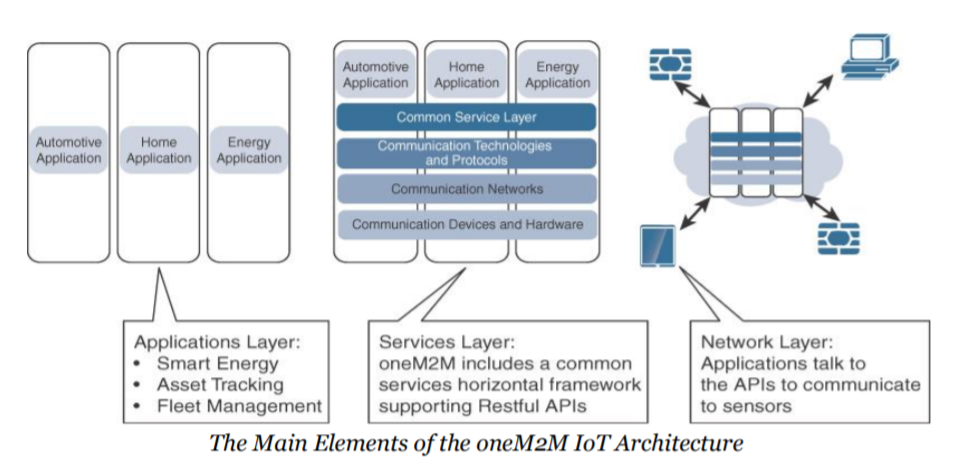In an effort to standardize the rapidly growing field of machine-to-machine (M2M) communications, the European Telecommunications Standards Institute (ETSI) created the M2M Technical Committee in 2008. The goal of this committee was to create a common architecture that would help accelerate the adoption of M2M applications and devices. Over time, the scope has expanded to include the Internet of Things.
One of the greatest challenges in designing an IoT architecture is dealing with the heterogeneity of devices, software, and access methods. By developing a horizontal platform architecture, oneM2M is developing standards that allow interoperability at all levels of the IoT stack.

The oneM2M architecture divides IoT functions into three major domains: the application layer, the services layer, and the network layer
- Applications layer: The oneM2M architecture gives major attention to connectivity between devices and their applications. This domain includes the application-layer protocols and attempts to standardize northbound API definitions for interaction with business intelligence (BI) systems. Applications tend to be industry-specific and have their own sets of data models, and thus they are shown as vertical entities.
- Services layer: This layer is shown as a horizontal framework across the vertical industry applications. At this layer, horizontal modules include the physical network that the IoT applications run on, the underlying management protocols, and the hardware. Examples include backhaul communications via cellular, MPLS networks, VPNs, and so on. Riding on top is the common services layer.
- Network layer: This is the communication domain for the IoT devices and endpoints. It includes the devices themselves and the communications network that links them. Embodiments of this communications infrastructure include wireless mesh technologies, such as IEEE 802.15.4, and wireless point-to-multipoint systems, such as IEEE 801.11ah.
